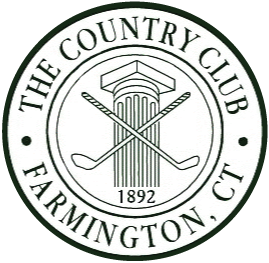Club History
The clubhouse is the social center of the club and over the years has been expanded and improved to meet the changing needs of the membership. The clubhouse originally dated back to 1767 and was a rectangular building sheathed with two-inch thick oak planks placed vertically, covered on the outside by clapboards and on the inside by lath and plaster. Before it was acquired by the club, well planned additions were made to the pre-Revolutionary War building and it became one of the most stately mansions in Connecticut. It was used solely for social purposes. Lockers were in a farmhouse located on the club grounds. On Sunday, May 19, 1901, a fire destroyed the clubhouse.
Construction began immediately on a replacement that exists today as the part of the clubhouse lying east of the formal dining room. It housed a ladies' parlor, a smoking room, a dining room, and rooms for private parties, sleeping rooms and a locker room for gentlemen. The new clubhouse drew favorable attention for the view from the dining room and for the two great verandas which spanned the back of the clubhouse, one on the first floor and the other on the second. Members often stayed at the clubhouse for several days using it as an inn. Sometime after 1912 an addition was built which contained a ballroom (today's formal dining room) and the grill (today's Founder's Room). The roof of the addition was an open-air terrace, which provided an unrestricted view in all directions except east.
At an unknown date after 1927 the great verandas at the back of the clubhouse were enclosed. The lower veranda was divided in the middle. The eastern part and the present alcove became the dining room. The western section became a tea room which, when prohibition was repealed in 1933, became a bar. A second addition to the clubhouse was opened in 1973 creating the present ballroom and gentlemen's locker room. The former gentlemen's locker area was assigned to the ladies, the former ballroom became the formal dining room and the second story veranda at the rear of the house became the cocktail lounge. At the same time the terrace next to the first tee became a covered patio. In 1991 the patio was rebuilt and doubled in size. The splendid clubhouse enjoyed by members today results from unending efforts reaching back more than a century.
The Country Club of Farmington 1892 - 1995, authored by James A. Frost chronicles the history of the club up through the centennial gala which was celebrated in early June 1995.

